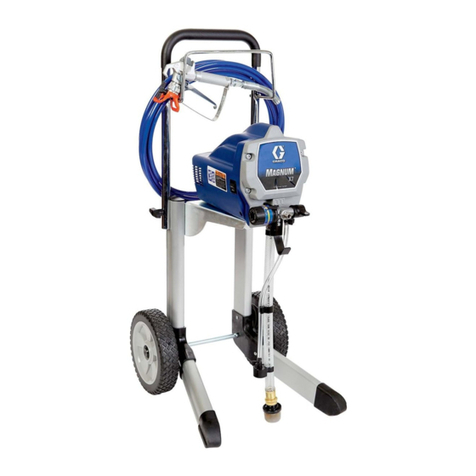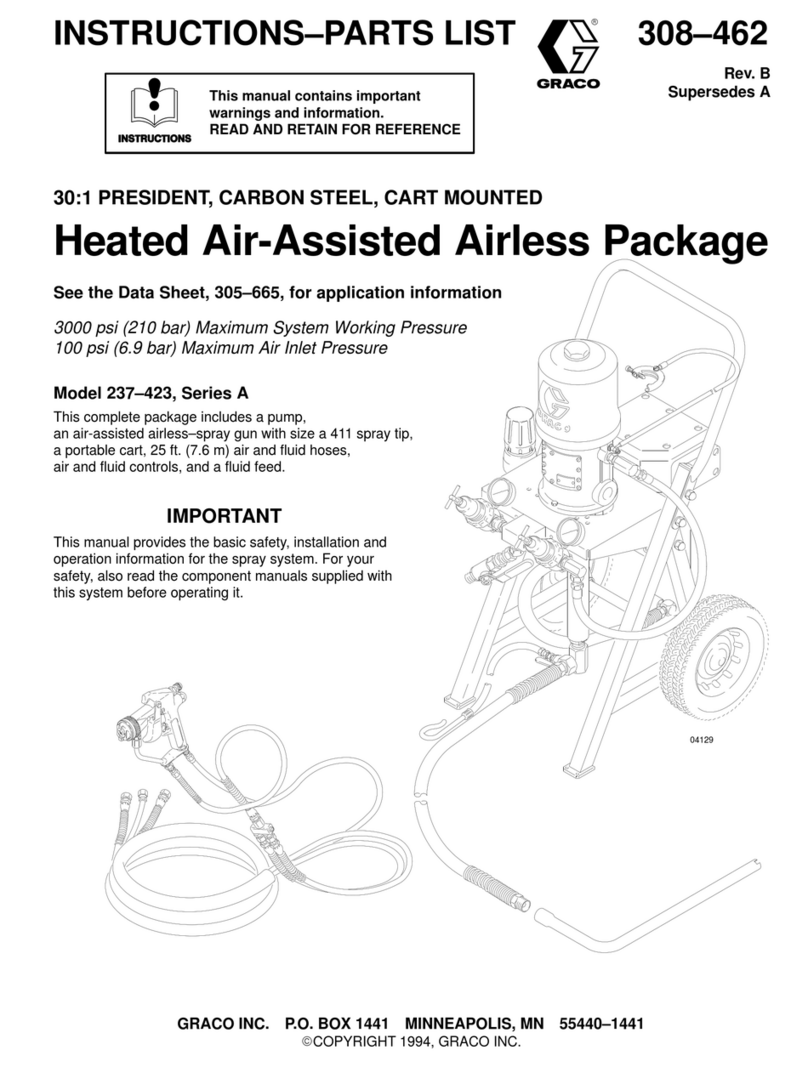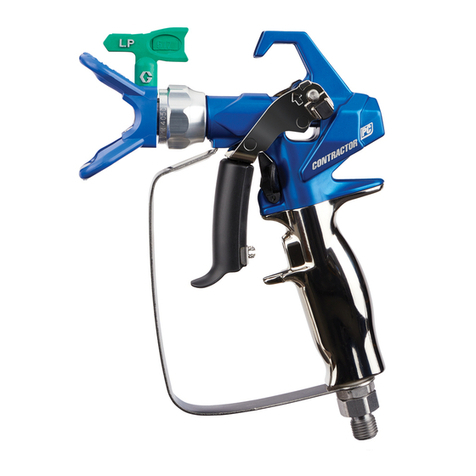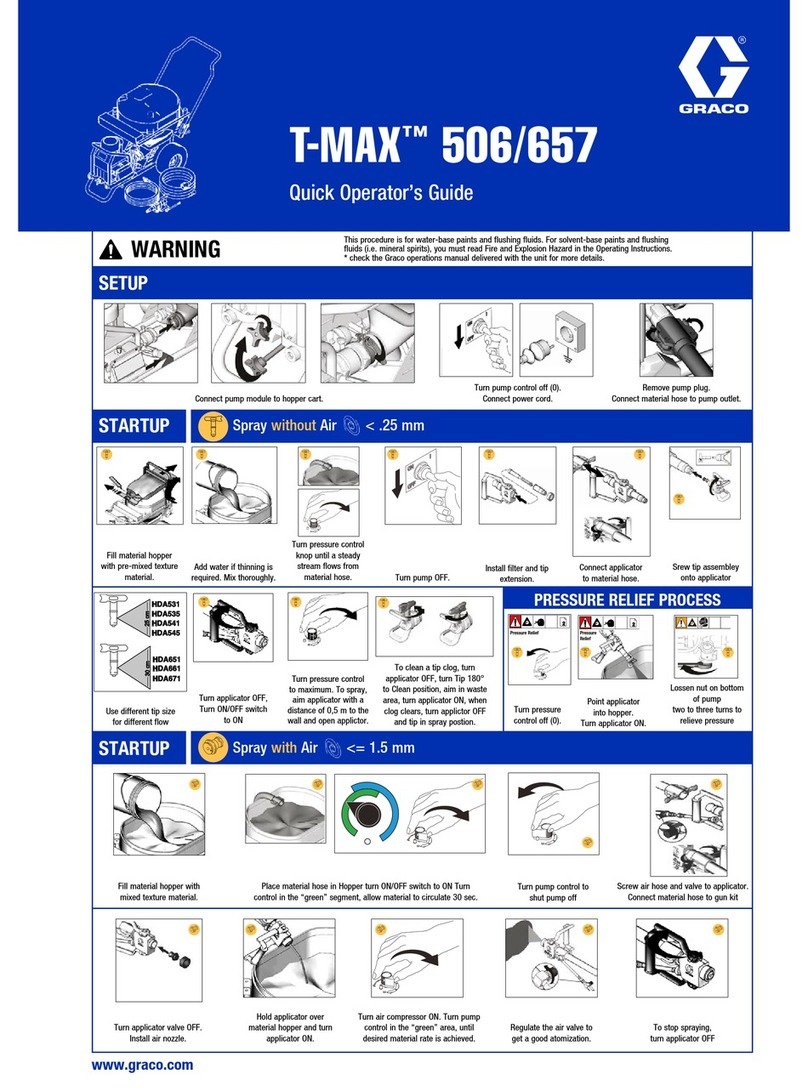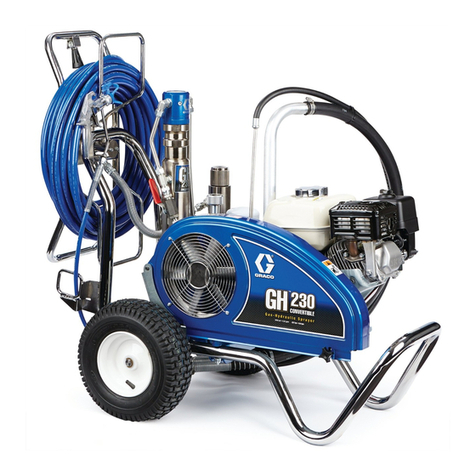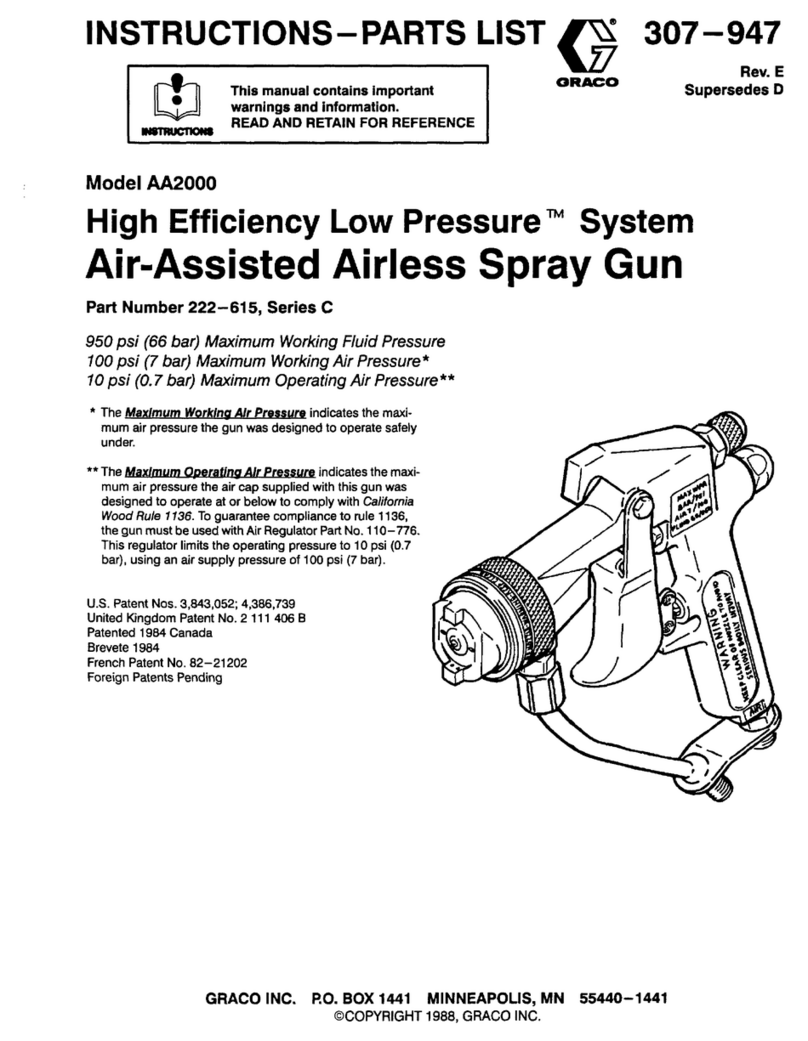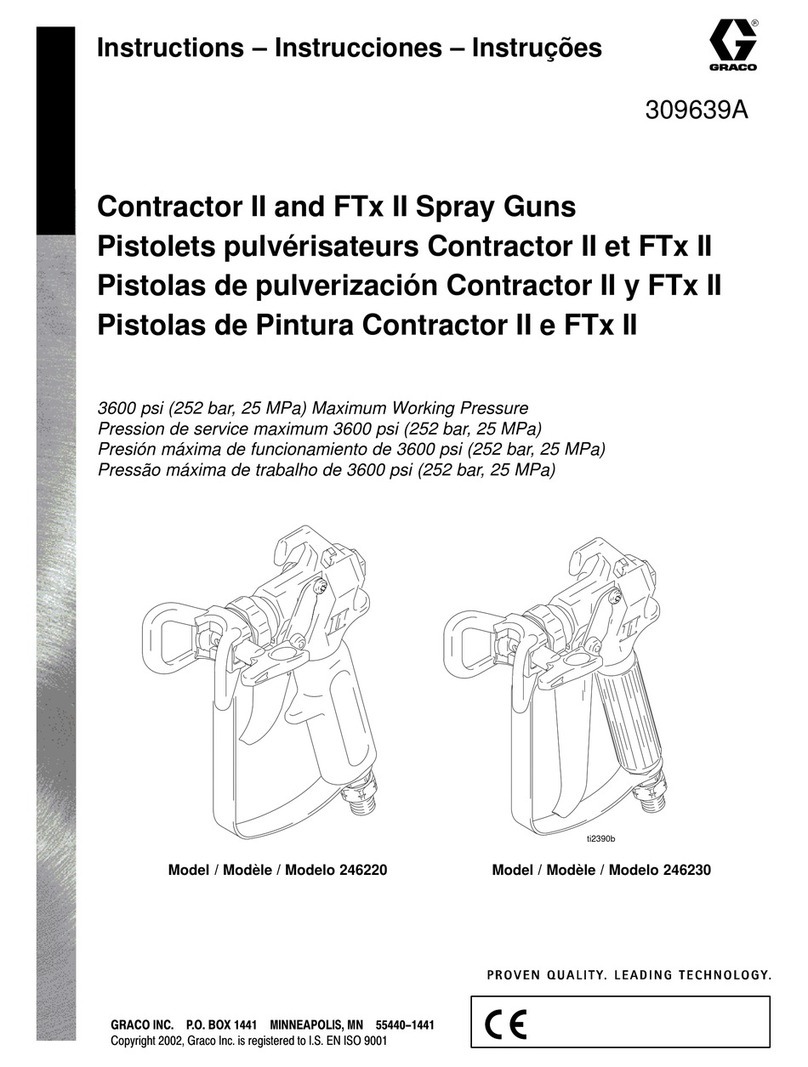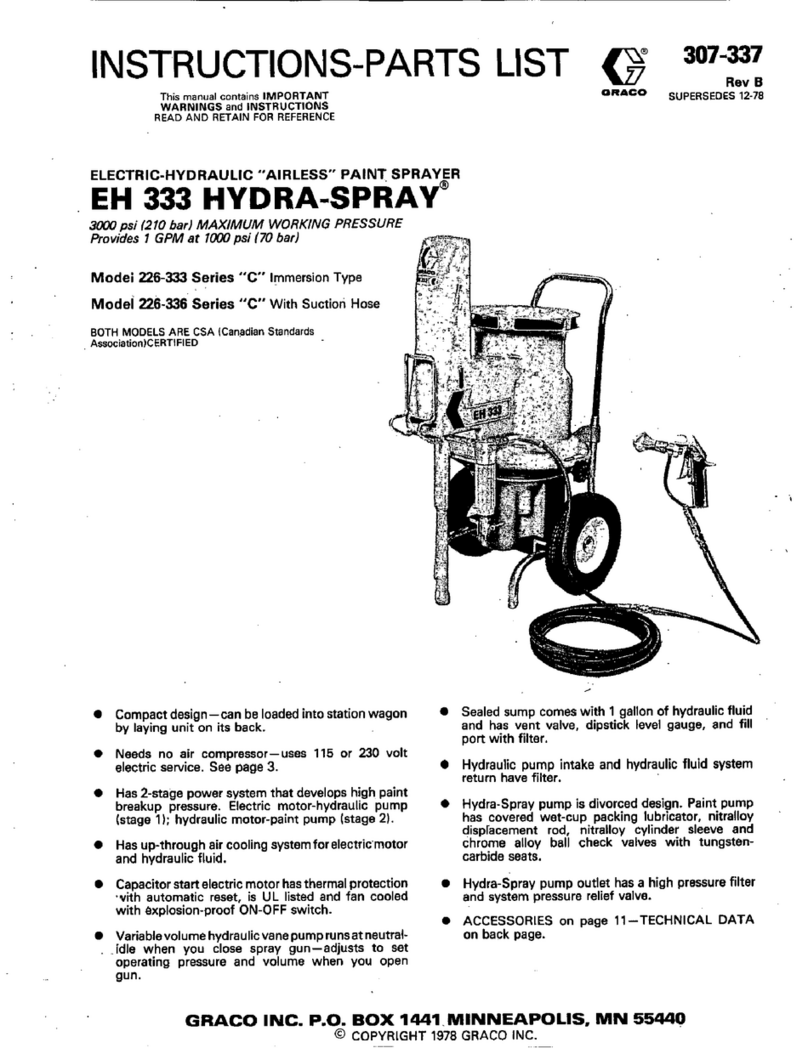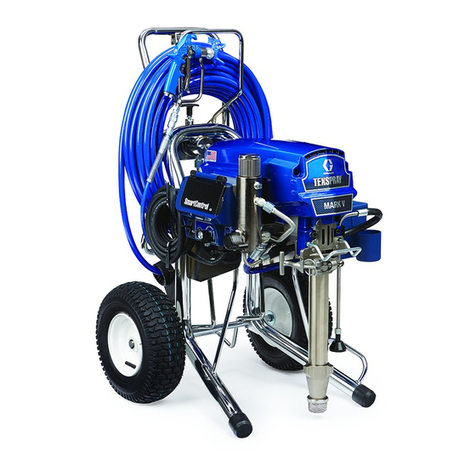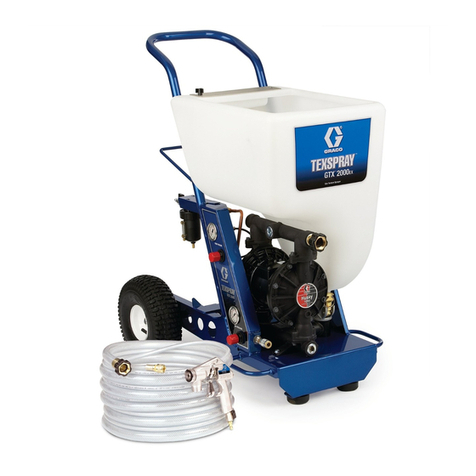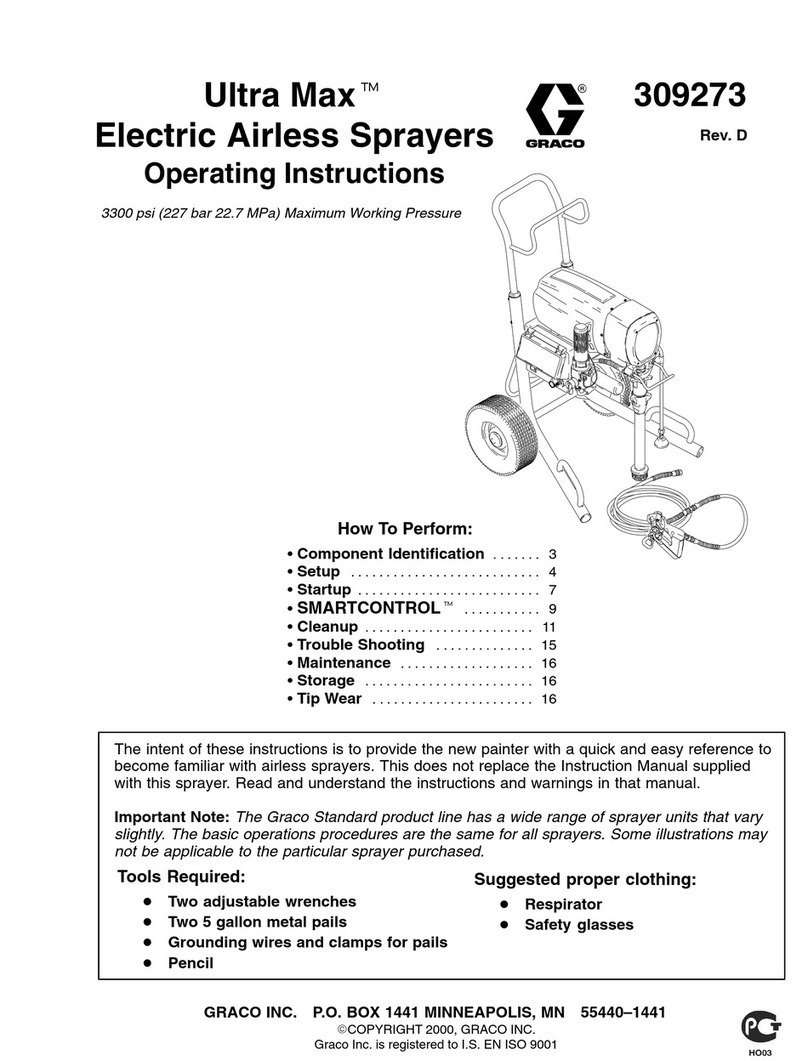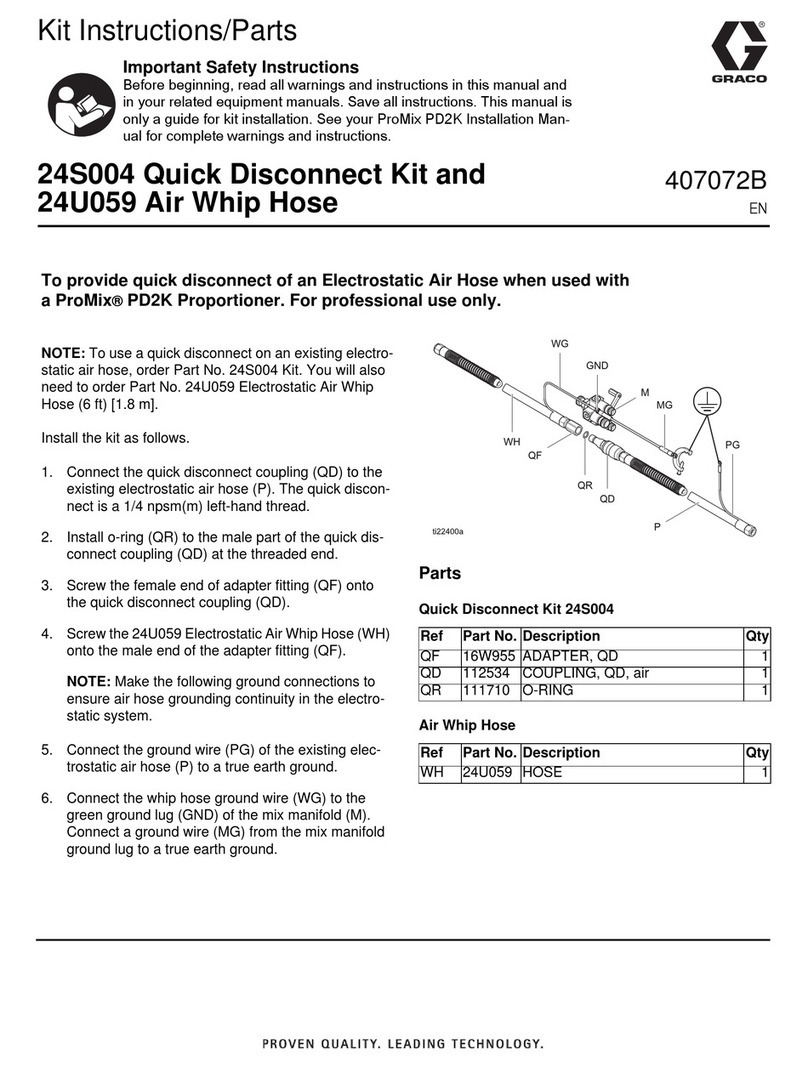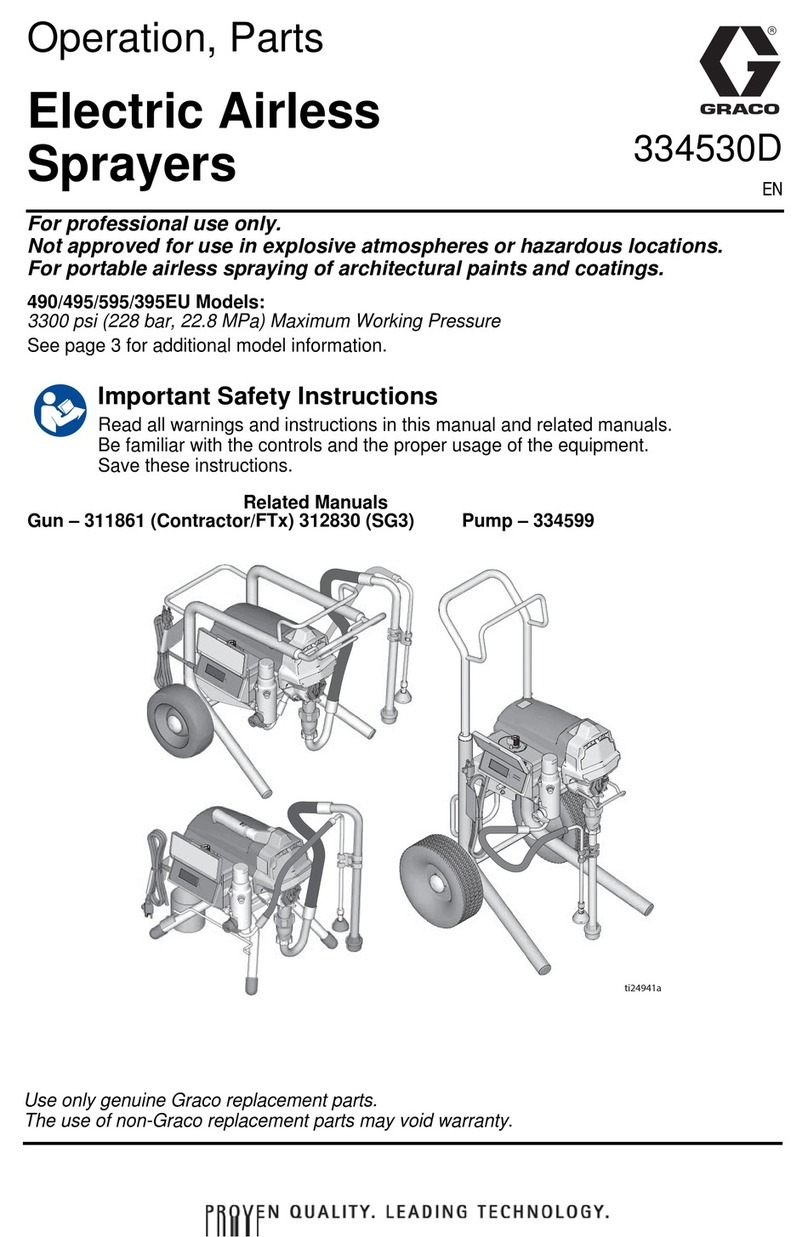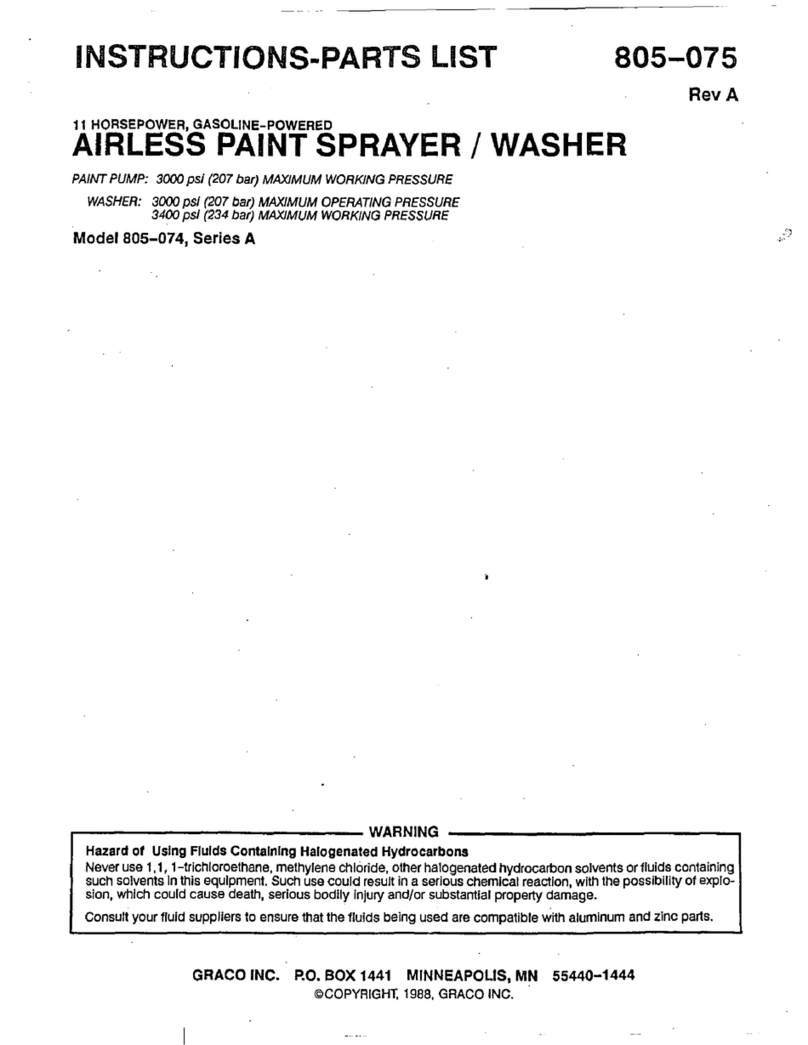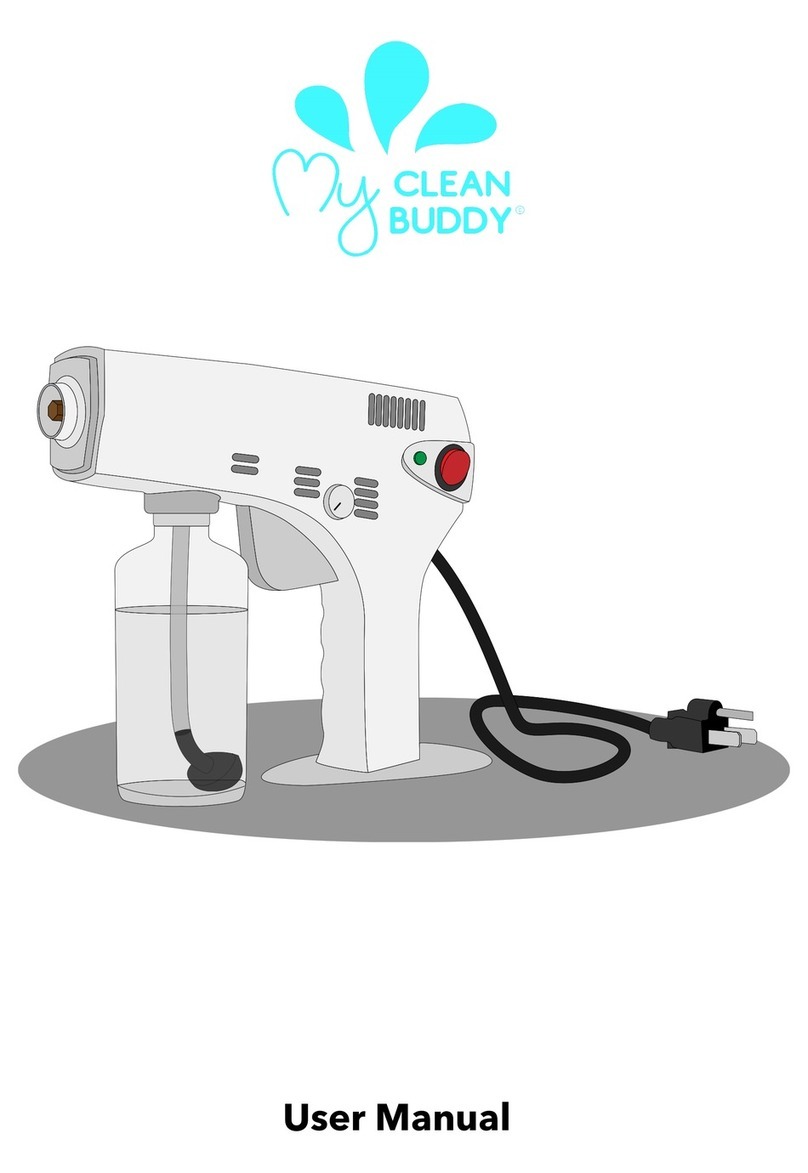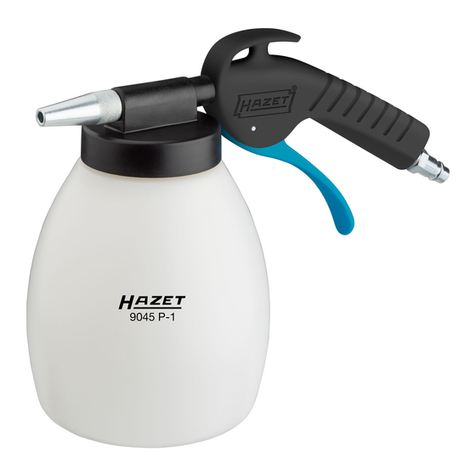
Troubleshooting
310893J 7
Problem Cause Solution
Pump output is low Strainer (82) is clogged Clean strainer.
Piston ball is not seating Service piston ball. Manual 310894.
Piston packings are worn or damaged
Replace packings. Manual 310894.
O-ring in pump is worn or damaged
Replace o-ring. Manual 310894.
Intake valve ball is not seating properly
Clean intake valve. Manual 310894.
Intake valve ball is packed with material
Clean intake valve. Manual 310894.
Engine speed is too low
Increase throttle setting. Manual 310892.
Clutch is worn or damaged Adjust or replace clutch. Page 10.
Pressure setting is too low Increase pressure. Manual 310892.
Fluid filter (56), tip filter or tip is clogged or
dirty
Clean filter. Manual 310892 or 309639.
Large pressure drop in hose with heavy
materials
Use larger diameter hose and/or reduce
overall length of hose. Use of more than
100 ft of 1/4 in. hose significantly reduces
performance of sprayer. Use 3/8 in. hose
for optimum performance (50 ft minimum).
Excessive paint leakage into throat
packing nut
Throat packing nut is loose Remove throat packing nut spacer. Tighten
throat packing nut just enough to stop leak-
age.
Throat packings are worn or damaged
Replace packings. Manual 310894.
Displacement rod is worn or damaged
Replace rod. Manual 310894.
Fluid is spitting from gun Air in pump or hose
Check and tighten all fluid connections. Rep-
rime pump. Manual 310892.
Tip is partially clogged Clear tip. Manual 309639.
Fluid supply is low or empty Refill fluid supply. Prime pump. Manual
310892. Check fluid supply often to prevent
running pump dry.
Pump is difficult to prime Air in pump or hose
Check and tighten all fluid connections.
Reduce engine speed and cycle pump as
slowly as possible during priming.
Intake valve is leaking Clean intake valve. Be sure ball seat is not
nicked or worn and that ball seats well.
Reassemble valve.
Pump packings are worn
Replace pump packings. Manual 310894.
Paint is too thick Thin the paint according to the supplier's
recommendations
Engine speed is too high Decrease throttle setting before priming
pump. Manual 310892.
Clutch squeaks each time clutch
engages
Clutch surfaces are not matched to each other
when new and may cause noise
Clutch surfaces need to wear into each
other. Noise will dissipate after a day of run
time.
High engine speed at no load Misadjusted throttle setting Reset throttle to 3300 engine rpm at no
load.
Worn engine governor Replace or service engine governor
Gallon counter not working Bad sensor, broken or disconnected wire.
Displaced or missing magnet.
Check connections. Replace sensor or
wire. Reposition or replace magnet.
No display, sprayer operates Display damaged or has bad connection Check connections. Replace display.
